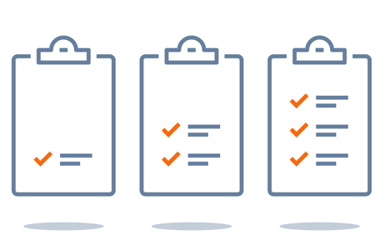Assessing Best Practices For Water Distribution Systems

The state of U.S. water distribution infrastructure — as shown by this infographic — ranges from aging to ancient, with nearly a quarter-million breaks occurring annually in the 1.2 million miles of water mains serving the U.S. population. What can water utilities do to be better prepared for the leaks that will inevitably occur? And what are the best practices to help them maintain delivery of safe, high-quality drinking water under these circumstances?
Learn From The Experience Of Others
In addition to being the source for drinking water standards and enforcement, the U.S. EPA is also a clearinghouse for scores of informative resources to help water utilities achieve those standards for public health and safety.
- Distribution Systems: A Best Practices Guide. With so many of the U.S.’s 50,000+ community water systems being small (i.e., fewer than 10,000 customers), this EPA document is a good start as a checklist of hands-on tasks and the frequency at which they should be performed. But there are additional organizational activities that can help utilities of any size be better prepared and more efficient in responding to the inevitable infrastructure emergencies that arise.
- Successfully Protecting Your Investment in Drinking Water Infrastructure. This decision-maker’s guide addresses managerial perspectives on reliability, cost-efficiency, and communication by documenting guidelines, field experiences, and links to specific resources.
- Drinking Water Distribution Systems: Assessing and Reducing Risks. This consensus study report available from the National Academies Press is the result of a request by the U.S. EPA to the National Academy of Sciences. It is built around a broad range of water quality issues associated with public water supply distribution systems and is available as a hardcover book, e-book, or free PDF file covering a wide range of topics, including:
- Regulations
- Contamination
- Physical, Hydraulic, and Water-Quality Integrity
- Approaches For Reducing Risk In Distribution Systems
- EPA White Papers. These distribution system white papers provide additional insights across a variety of topics ranging from infrastructure management to potential health risks.
The largest water industry association, AWWA, also provides documentation of standards, manuals of industry best practices, and numerous educational resources to help water professionals achieve peak efficiency.
Complement Physical Preparation With Good Management Practices
With so much pressure on day-to-day tactical efforts to keep water distribution infrastructure up and running, it is not uncommon for some of the more strategic efforts to get deferred. Unfortunately, doing so can result in perpetuating inefficiencies in the system and leaving the utility poorly prepared for emergency repair situations when they do arise. Consider how investing some time to review these concepts and resources can help improve water distribution infrastructure efficiency and protect against costly delays or expenditures before the next water-leak emergency.
- Water Audit. Both the EPA and AWWA offer resources for learning more about why and how to conduct water audits that can help recover up to three-quarters of treated water that is currently being lost — including this free Water Audit Software.
- Advance Planning. In an industry where the issue of emergency repairs is not a question of ‘if’ but ‘when,’ advanced planning can go a long way toward resolving those emergencies more quickly. Most utilities will sooner or later need to contract with outside suppliers for special needs. Having discussions with vendors for specialized components, such as large-size encapsulating sleeves (Figure 1A) or specialized services such as line-stop and bypass installations (Figure 1B), in advance can save precious time when an emergency does occur.

Photos courtesy of JCM Industries
Figure 1A. (left) Full encapsulation provides a total solution for stopping leaks that can accommodate differences in pipe size, material, and even a certain degree of misalignment without having to disrupt water service or complicate structural installation issues. Figure 1B. (right) Pipe-stop-and-bypass technology provides the same continuity of service for installations where damaged infrastructure must be removed and replaced.
- Funding Research. These EPA resources offer guidance to help utilities take maximum advantage of opportunities to protect and improve their infrastructure investments:
- This document provides broad insight into many facets of financial operations plus opportunities for water utility management and infrastructure funding.
- This webpage provides explanations and links to many water infrastructure and resiliency funding opportunities available from state or federal governments and public-private partnerships.
- This interactive webpage helps public and private drinking water utilities identify the best federal disaster funding programs for their specific circumstances.
- Infrastructure Mapping. There are multiple reasons why repair crews often face ‘surprises’ when excavating emergency repair sites — undocumented older piping, misfiled manual records, or failure to document ‘as-built’ construction after changes to the ‘as-drawn’ plans were required in the field. Industry-focused software for digital documentation of existing infrastructure can make it easier to categorize and analyze historical records, then record additional detail every time nearby infrastructure is unearthed for repairs. Equally important, when those digital files are available via mobile web access, supporting documentation such as maps, drawings, and specifications can be instantly available to work crews in the field.
- Cross-Connection Control. In addition to taking care of infrastructure that delivers water to customers, it is equally important for a utility to safeguard against customer operations impacting the quality of the distribution system due to backflow, backpressure, or backsiphoning. This EPA document on cross-connection control best practices highlights topline sources of and solutions for cross-connection contamination, while this more detailed cross-connection control manual details methods for prevention, administrative concerns, and testing procedures.
